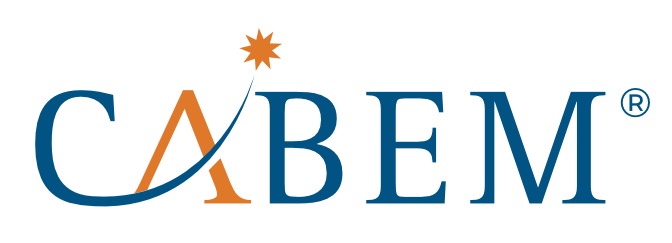4 Advantages to a Competency Management System
The duties of the government are complex and multi-faceted. They require a balance of skills, knowledge, attitudes, and behaviors. They also require highly trained and qualified people. Competency management and credentialing are two key components in the government that ensure that government officials and public administrators are able to perform these critical work functions efficiently and effectively.
Competency management is the process of planning, assessing, and developing the skills, abilities, and knowledge of government employees. It helps governments clarify the abilities needed for a given position, and creates a standard against which to measure effective employee performance. Competency Management provides a “dashboard” that displays current skill sets and how well those abilities map to targeted jobs, so leaders can make informed decisions about whether, and how, to develop employees.
Credentialing, on the other hand, is a process used to verify an individual’s qualifications, ensuring that the individual meets specific standards and is qualified to perform certain tasks. Together, these two processes, competency management and credentialing offer the government a number of advantages. In this blog post, we will examine these advantages, as well as the benefits of an automated competency management system.
Why is Competency Management So Valuable in Government?
A well run government must be able to act competently, sensibly, and effectively. In the development and promotion of civil servants and political leaders, it is crucial that we evaluate their competencies and verify their qualifications. The federal government is the largest employer in the U.S. with just over 2 million civilian employees. Leaders are making huge workforce decisions such as layoffs and reductions in force without enough visibility into the skills and talent of these workers. Competency management systems can stop these blind decisions from happening. Tracking competencies and skills can help with many workforce development efforts.
- Recruitment – identify employees that are a good fit for specific jobs.
- Emergency response – Government agencies are constantly facing emergencies such as natural disasters and civil unrest. These emergencies create an urgency to find workers to step in and help effectively.
- Career planning – mapping a path for government workers
All government agencies have unique requirements. It is important to find a competency management system that is easily tailored to the needs of the organization.
4 Advantages to a Competency Management System in the Government?
Increased Efficiency
Competency management is essential for running a government efficiently. It allows the government to ensure that all employees are qualified for their roles, and can adequately perform the tasks that are assigned to them. Competency management also ensures that the skills of each employee are kept up to date, so that they are able to handle the latest developments in their roles. This allows the government to allocate resources effectively and improve the overall efficiency of its workforce. As a result, the government is able to reduce its costs while still providing quality services.
Competency management helps the government in anticipating potential issues and avoiding them before they occur. This helps reduce errors and delays in government operations and ensures that everything runs smoothly.
In addition, competency management can be used as a tool for training and development. By keeping track of employee competencies, the government can easily identify any skill gaps and take steps to fill them. This way, the government can ensure that its employees stay current with the latest developments and have the necessary skills to perform their roles effectively.
Improved Customer Service
In the government, providing high-quality customer service is essential for maintaining a positive public reputation. By having a clear understanding of the knowledge and abilities that are required for each role, government agencies can be better prepared to answer questions and provide assistance to customers.
Using competency management in the government also helps to ensure that employees are appropriately matched to customer requests. This ensures that the customer will receive the assistance they need more quickly. Competency management also helps ensure that customer service remains consistent regardless of who is handling the request. Additionally, with an increased level of accountability, employees are more likely to take their customer service responsibilities seriously and work hard to meet the expectations of the organization.
Improved Employee Morale
The implementation of competency management in the government can have a major impact on employee morale. Competency management allows government agencies to identify, measure, and track employee skills, knowledge, and abilities. This can provide clear guidance on how employees can improve their performance and move up in the organization. It also increases transparency between employees and their superiors, allowing for more effective communication.
By better understanding each employee’s skills and abilities, supervisors can more accurately assign tasks that match their capabilities. This leads to more efficient workflows and improved job satisfaction. Additionally, credentialing provides employees with tangible goals to work towards, which can increase motivation and job satisfaction.
Finally, competency management and credentialing can help create a workplace culture based on collaboration, where all employees are respected for their contributions and abilities. This is key for developing trust between supervisors and their staff, and it can significantly boost morale in the workplace.
Enhanced Security
Competency management allows organizations to measure the skill sets of their employees, as well as assess their performance against predetermined standards. This helps to identify those employees who may be struggling or in need of additional training. By identifying these issues early, the government can take steps to address any deficiencies and ensure that employees are performing at their best.
Overall, competency management and credentialing can provide an added layer of security to the government and its employees. Not only does it help to ensure that only qualified individuals are hired, but it also helps to ensure that they are trained and monitored appropriately. This helps to ensure that government organizations remain secure and operate more efficiently.
For the criminal justice system, a data or infrastructure breach can be damaging to national security and the civil liberties of individuals and businesses.
What is CJIS Compliance?
The policies and departments of CJIS were established in 1992 and make up the largest division of the FBI. The CJIS databases contain the necessary information for detaining criminals, performing background checks, and tracking criminal activity. The CJIS Security Policy keeps professionals in criminal justice and law enforcement agencies at local, state, and federal levels in agreement with security standards for the use, transmission, storage, and processing of Criminal Justice Information (CJI). Compliance with the policy helps safeguard the integrity, confidentiality, and reliability of criminal justice systems.
Reaching compliance is no small undertaking. It is the ongoing process of ensuring critical documents are safe and secure. A competency management system is crucial for the criminal justice system.
Credentials in Government Agencies
Credentialing is an essential component of the government, as it allows for organizations to establish and maintain a secure level of trust in the individuals who represent them. This trust helps to protect the public from potential fraudulent behavior, and serves to verify that those with access to sensitive information are trustworthy and qualified to handle it.
Credentialing also helps to ensure the accuracy of information given by a representative of the government. It ensures that the individual has the knowledge and experience required to fulfill their duties, while also verifying that they are properly authorized to access confidential or restricted information. Credentialing can include background checks, interviews, and other forms of verification.
The use of credentialing within the government is critical in maintaining a safe and secure environment for citizens, as well as protecting the rights and privacy of those who interact with governmental entities. By ensuring that only those who are qualified and trustworthy have access to confidential or sensitive data, the government is able to provide citizens with peace of mind that their information is safe.
How Can An Automated Competency Management System Help?
Automated competency management is a critical aspect of any government organization.
- Streamlined Hiring Process: Automating the process of assessing competency allows the government to make better informed decisions when selecting potential candidates, streamlining the entire hiring process. Automated assessments save time and money while also improving accuracy.
- Improved Employee Development: Automated competency management systems allow managers to quickly assess employee development needs and create plans to help them reach their goals. This can help to promote career growth, reduce employee turnover, and increase job satisfaction.
- Greater Transparency: Automated competency management systems make it easier for government organizations to track individual employee performance and provide detailed reports. This can help to provide more transparency across the organization and provide better oversight of operations.
- Reduced Risk: Automating the process of assessing competency can help reduce risk associated with potential negligence or misconduct. As employees are regularly monitored and evaluated against specific criteria, it becomes easier to identify areas where further training or corrective action may be needed.
With the right tools and strategies in place, automated competency management can help to improve organizational performance and foster a culture of success.
CABEM’s CJIS Manager and Competency Manager
Software should be able to do business the way you want to. CABEM Technologies has 18+ years of experience providing highly flexible business solutions across a wide array of industries including manufacturing, healthcare, education, and government.
We offer a cloud-based platform to track CJIS compliance requirements for the agency, employees, and contracted vendors. We have deep domain expertise in CJIS Compliance and have earned the trust of your agency colleagues, as well as leaders of other highly regulated industries like healthcare, manufacturing, education, and government.
Everyone has many tasks that they need to accomplish, and desired skills to be able to do so competently. Our competency management system, Competency Manager, offers a cloud-based platform, and helps bridge this gap, to compile and create competencies in a logical way that institutionalizes enterprise employee knowledge.
We found that many training plans operate within a vacuum and are not formulated from the top down and to address needs of the whole organization. Both CJIS Manager and Competency Manager can be deployed on-premise to meet government security requirements, if appropriate. Our systems allow organizations to create competencies and map them to departments, roles, locations, and other segments across the enterprise. Contact us today to get started.

